brazilian pepper tree uses
An herbicide containing triclopyr or glyphosate is applied directly to the trees foliage. Scientists Use Invasive Brazilian Peppertree to Treat MRSA Scientists Use Invasive Plant to Treat MRSA In a new study published this week in the journal Scientific Reports scientists found that an.
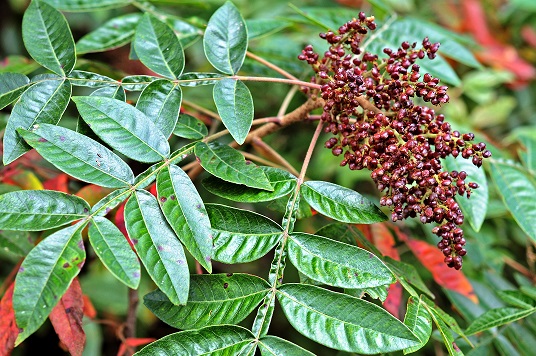
Could It Be A Brazilian Pepper Tree Uf Ifas Extension Pinellas County
Its bright red berries and brilliant green foliage we re used frequently as Christmas decoration as its berries ripen in late fall and is someti mes known as Florida holly.

. Also even though the Brazil Pepper is considered invasivenuisance species it can actually be beneficial if properly controlled. Menstrual Problems Effective Urinary Tract Infection UTI Effective Gout Effective Brain Tumor Effective Vaginosis Effective Rheumatism Effective Fungal Infection Effective Bronchitis Effective Cold Common Cold Effective Depression Effective. For Candida and yeast infections 3.
The sap however can cause skin irritation for sensitive skin. Its role is more medicinal. Its incarnation in the United States is considered invasive in states such as California Florida and Texas with aggressive programs in place to eradicate it from natural ecosystems and disturbed habitats.
Unlike its relatives the Brazilian Peppertree isnt used to season food. Birds feed on the berries. White flowers grow on this tree and fruits are present in clusters.
Brazilian Pepper Bark Tea as a Laxative. Resource use mechanisms of BP are intertwined with the enemy release hypothesis where the effects of enemy release will be greatest for high resource use species that possess high nutrient uptake ability in resource rich environments Blumenthal et al 2009. Brazilian pepper was brought into Florida in mid -1800s for use as an ornamental plant before people were aware of the problems it would create.
Brazilian pepper tree wood burns very well. As a broad-spectrum antimicrobial and antiseptic against bacterial viral and fungal infections 2. Its scientific name is Schinus terebinthifolia.
Brazilian peppertree is still employed in herbal medicine today in many countries. The small pink fruits from this tree have been used by traditional Amazonian healers for generations to treat infections and wounds. Brazilian pepper-tree is native to Argentina Paraguay and Brazil.
Bark-And-Leaf Tea Is Used as a Stimulant and Antidepressant. The Brazilian pepper tree is a small tree and can grow to a height of 33 ft 101 m. CuresDecoded worldwide community recommends Brazilian Pepper Tree for.
It can grow in damp places. This species invades aquatic as well as terrestrial habitats greatly reducing the biodiversity of natural communities. It has been used in folk herbal medicine for the treatment of a wide variety of conditions and diseases.
Resource Use Mechanisms of the Brazilian Pepper Tree. The bees absolutely love the flowers it produces so it is a great pollinator attractor. Once you have cut split and then dried the wood it will burn well if you need it for firewood.
The folk medicine uses of pepper tree are many and include relief from symptoms of ulcers respiratory concerns diarrhea and skin concerns. Results of a foliar application will be wilting of leaves. The Best Ways to Use the Brazilian Pepper Tree.
Other uses of Brazilian Pepper Tree Medicinal. Several studies have confirmed Brazilian pepper tree to be toxic against Staphylococcus. Its against the law to.
It is used in South and Central America as a wound healer mild laxative and diuretic. 1 However most contemporary uses of Brazilian pepper tree are focused on its activity against harmful organisms. To stop bleeding and heal wounds internally and externally.
Foliar herbicide application can be used on Brazilian pepper-tree seedlings. Brazil extracts from the bark are used in herbal medicine to address cardiovascular problems harmful organisms and fungus The folk medicine uses of pepper tree are many and include relief from symptoms of ulcers. Brazilian peppertree produces a dense canopy that shades out all other plants and provides a very poor habitat for native species.
Special features of Brazilian Pepper Tree Attracts birds. 6 rows Brazilian pepper tree has been used as a remedy for ulcers respiratory problems wounds. In its native habitat it is a valuable tree often planted for reforestation.
To tone balance and strengthen heart function and as a heart regulator for arrhythmia and mild hypertension 4. Imported from South America in the 1840s Brazilian peppertree quickly spread into natural areas taking over native tree hammocks pine flatlands and mangrove forest communities. Its fruits can be pink or red in color.
However because the tree has a lot of sap internally you will need to dry it out before it can even be considered to be used for burning. Its bright red berries and brilliant green foliage are used frequently as Christmas decorations. Once called Florida holly for its bright red berries Brazilian pepper branches were often used as Christmas decorations in Florida.
It is used for many conditions in the tropics including menstrual disorders bronchitis gingivitis gonorrhea gout eye infections rheumatism sores swellings tuberculosis ulcers urethritis urogenital disorders venereal diseases warts and wounds. The herbicide will be translocated to other parts of the tree thus effec-tively controlling the Brazilian pepper-tree. This species is an aggressive woody weed.
The species was brought into Florida in mid-1800 for use as an ornamental plant. Currently modern medical research is being done to investigate its potent anti-bacterial and anti-viral properties. The energy devoted to defense strategies.
Brazilian pepper tree is the common name for the Schinus terebinthifolius tree a native of Brazil Argentina and Paraguay.
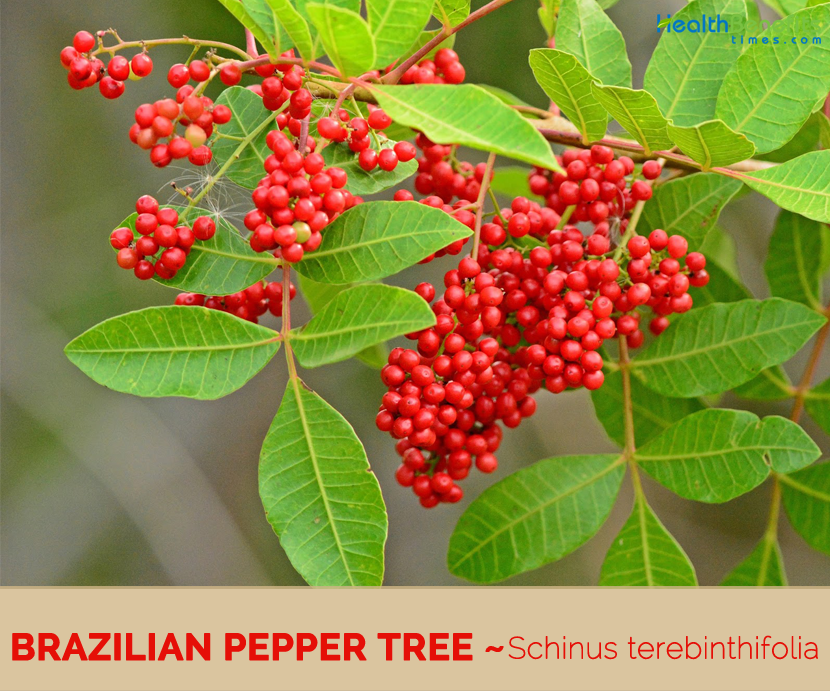
Brazilian Pepper Tree Facts And Health Benefits
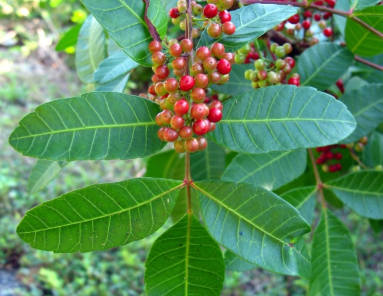
Invasive Plant Spotlight Brazilian Pepper U S National Park Service
Brazilian Pepper Tree On Most Hated Plants List

Brazilian Peppertree Schinus Terebinthifolia Sapindales Anacardiaceae 5421914

Brazilian Pepper Tree A Berry With Big Benefits

Brazilian Pepper Tree Facts And Health Benefits
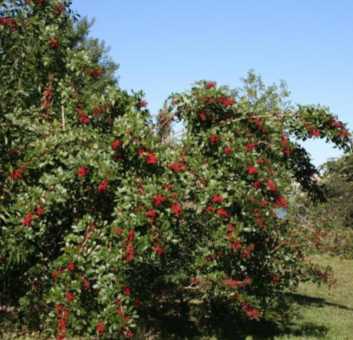
Invasive Plant Spotlight Brazilian Pepper U S National Park Service
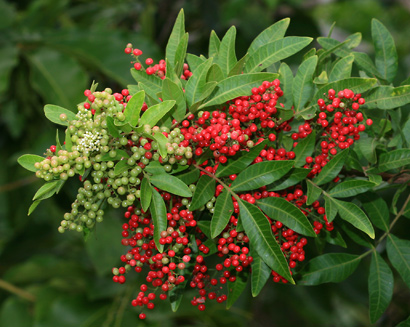
Newsletter 23 January 2012 Eat The Weeds And Other Things Too
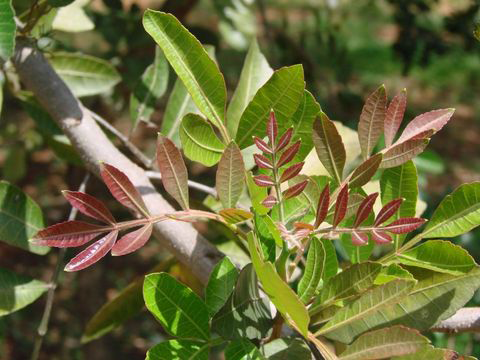
Brazilian Pepper Tree Facts And Health Benefits

Brazilian Pepper Tree Mlalazi Estuarine Floodplain Inaturalist
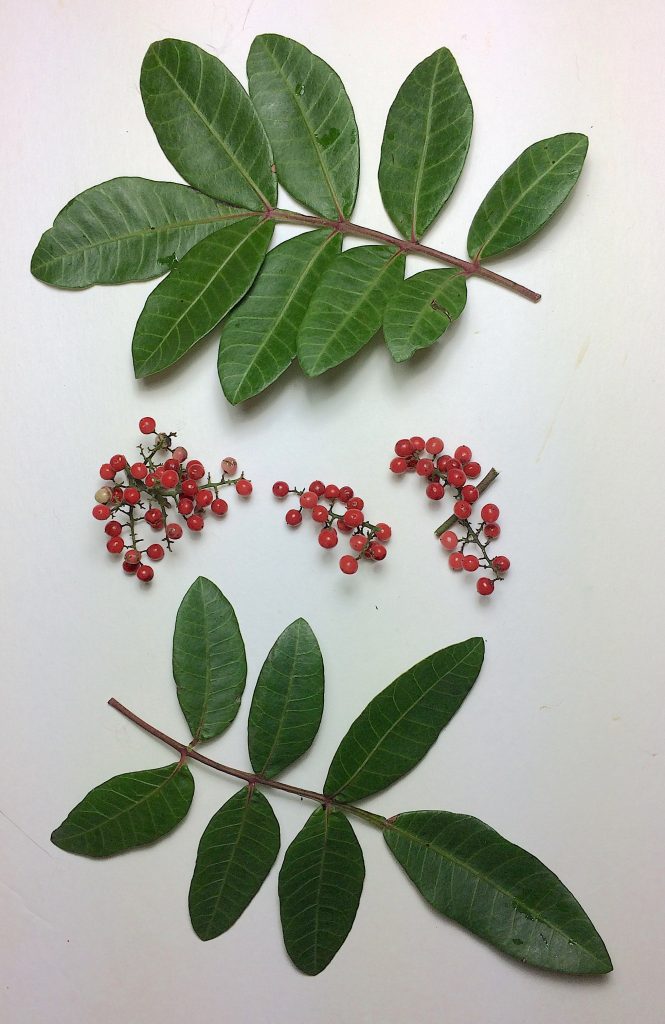
Alternative Pepper Or Brazilian Pest Eat The Weeds And Other Things Too

Florida Researchers Use Pests To Help Control Pesky Brazilian Peppertree Plant Npr

Brazilian Pepper University Of Redlands

Brazilian Pepper Tree Mlalazi Estuarine Floodplain Inaturalist

Brazilian Pepper Tree A Berry With Big Benefits

Brazilian Pepper University Of Redlands


